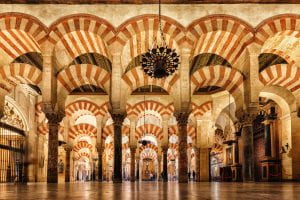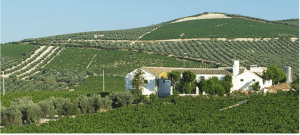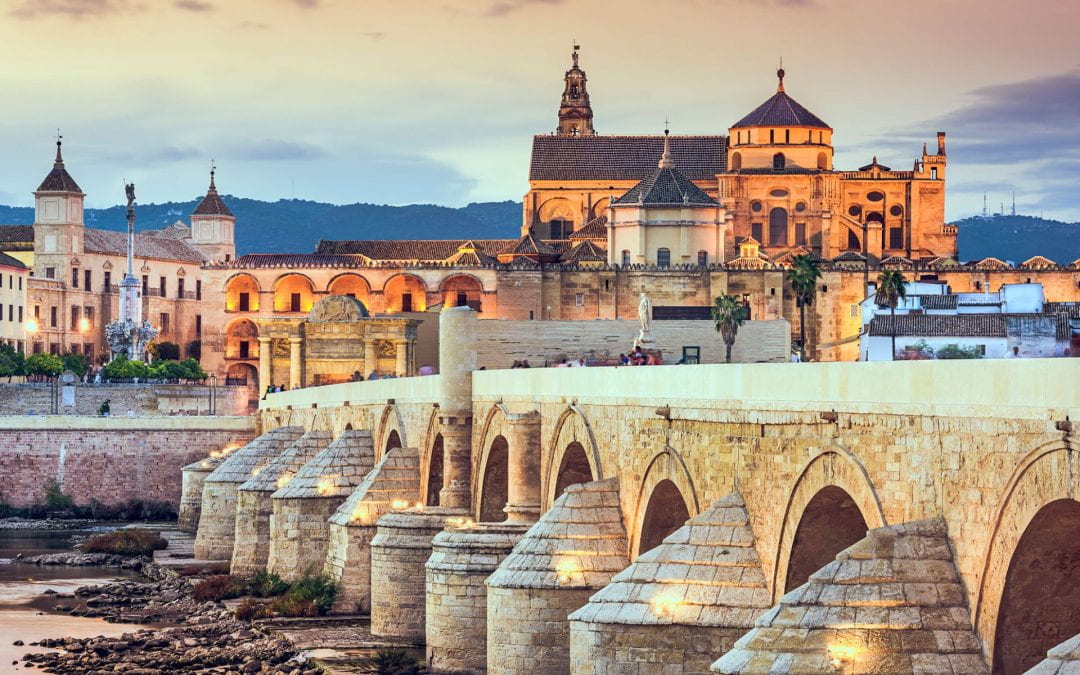Where are we off to next?
Drumroll please………
Cordoba, Spain!
 We will be exploring the ancient art of cask-making, also called cooperage, in the Cordoba-Montilla area. The type of cask and the type of wood used in winemaking can significantly influence the taste, aroma, and characteristics of wine in Spain, as in other winemaking regions around the world. But what is so special about this area?
We will be exploring the ancient art of cask-making, also called cooperage, in the Cordoba-Montilla area. The type of cask and the type of wood used in winemaking can significantly influence the taste, aroma, and characteristics of wine in Spain, as in other winemaking regions around the world. But what is so special about this area?
Cordoba, Spain has a rich history illustrated by its diverse people, unique architecture, and lively food and wine culture. Founded by Romans in the 2nd century BC, Cordoba slowly acquired great importance through the period of Augustus. It is said that its “period of greatest glory” took place after the Moorish conquest that brought almost 300 mosques and palaces that could “rival the splendors of Constantinople, Damascus, and Baghdad” (Centre). One thing that is most special about the town’s history is the many cultures and religions that have inhabited it throughout the years including the Jewish, Christians, Muslims, and Romans. This amalgamation of people and traditions has influenced their architecture and customs.
During the Caliphate period, Cordoba was the most important city in Europe after Abderrman III defied the religious authorities of rival dynasties and created the Caliphate of Cordoba. Some of the brightest minds in science, math, philosophy, and astronomy came to the region and built almost 70 libraries to continue education. A school of medicine was also brought to the city and it continued to grow during the al-Anduras era marked by three cultures- Christian, Jewish, and Arabic- co-existing (Network). That was a time of constant power struggle but also cultural enrichment.

Cordoba’s architecture “reflects thousands of years of occupation by different cultural groups – Roman, Visigoth, Islam, Judaism, and Christian-, that all left a mark” (Centre). One of the most famous historical landmarks that is a must-see for all who come to Cordoba is The Great Mosque of Cordoba. As it has evolved over the years it has become a testing ground for new architectural feats. After expansions by the caliphs of Cordoba, it became the second-largest mosque in the world at 23,400 square meters. It houses 1,300 columns made of marble, granite, and jasper that support 365 horseshoe arches. Something that makes it unique to the region is that due to 16th-century construction by Christians and subsequent use of the structure, it is the only mosque-cathedral in the world today. The mix of architectural styles including Islamic, gothic, Renaissance, and Baroque, is due to its storied history of an ever-changing culture (Khoury).
But what about the wine culture?
 Wine and food are important cultural and economic markers in the Cordoba-Montilla area. So much so that a Wine Route has been created in the territory between the rivers Genil and Guadajoz in the province of Cordoba to showcase their unique process and flavors to those visiting the area. Towns on the Route include Montilla, Cordoba, Lucena, Moriles, Aguilar de la Frontera, Fernen-Nunez, Montemayor, Rambla, and Puente Genil. While there are multiple wine routes in Spain, this is one that specifically is proud of the careful barrel-aging process. The route includes restaurants, museums, and wineries to allow tourists to see the painstaking process and the fruits of that labor. The biggest and oldest winery in the area is Alvear, which can trace its origins back to 1729.
Wine and food are important cultural and economic markers in the Cordoba-Montilla area. So much so that a Wine Route has been created in the territory between the rivers Genil and Guadajoz in the province of Cordoba to showcase their unique process and flavors to those visiting the area. Towns on the Route include Montilla, Cordoba, Lucena, Moriles, Aguilar de la Frontera, Fernen-Nunez, Montemayor, Rambla, and Puente Genil. While there are multiple wine routes in Spain, this is one that specifically is proud of the careful barrel-aging process. The route includes restaurants, museums, and wineries to allow tourists to see the painstaking process and the fruits of that labor. The biggest and oldest winery in the area is Alvear, which can trace its origins back to 1729.
To learn more about the Wine Route click here: https://www.spain.info/en/oenology/wine-route-montilla-moriles/
Cordoba, Spain, and the surrounding area encompassing Montilla and the Wine Route are packed with stories from different religions, cultures, and customs. You see it in its architectural amalgamations, its wine-making process, and its people. The city is welcoming to all those who want to experience the uniqueness of their cask-making process, their mosque-cathedral, or their diverse and welcoming locals. Standing on a street in Cordoba, is standing on a history spanning centuries and is something to be soaked in. Our crew can’t wait to experience it.
Stay tuned to PaceDocs and follow us on social media as we head out on our next adventure!

